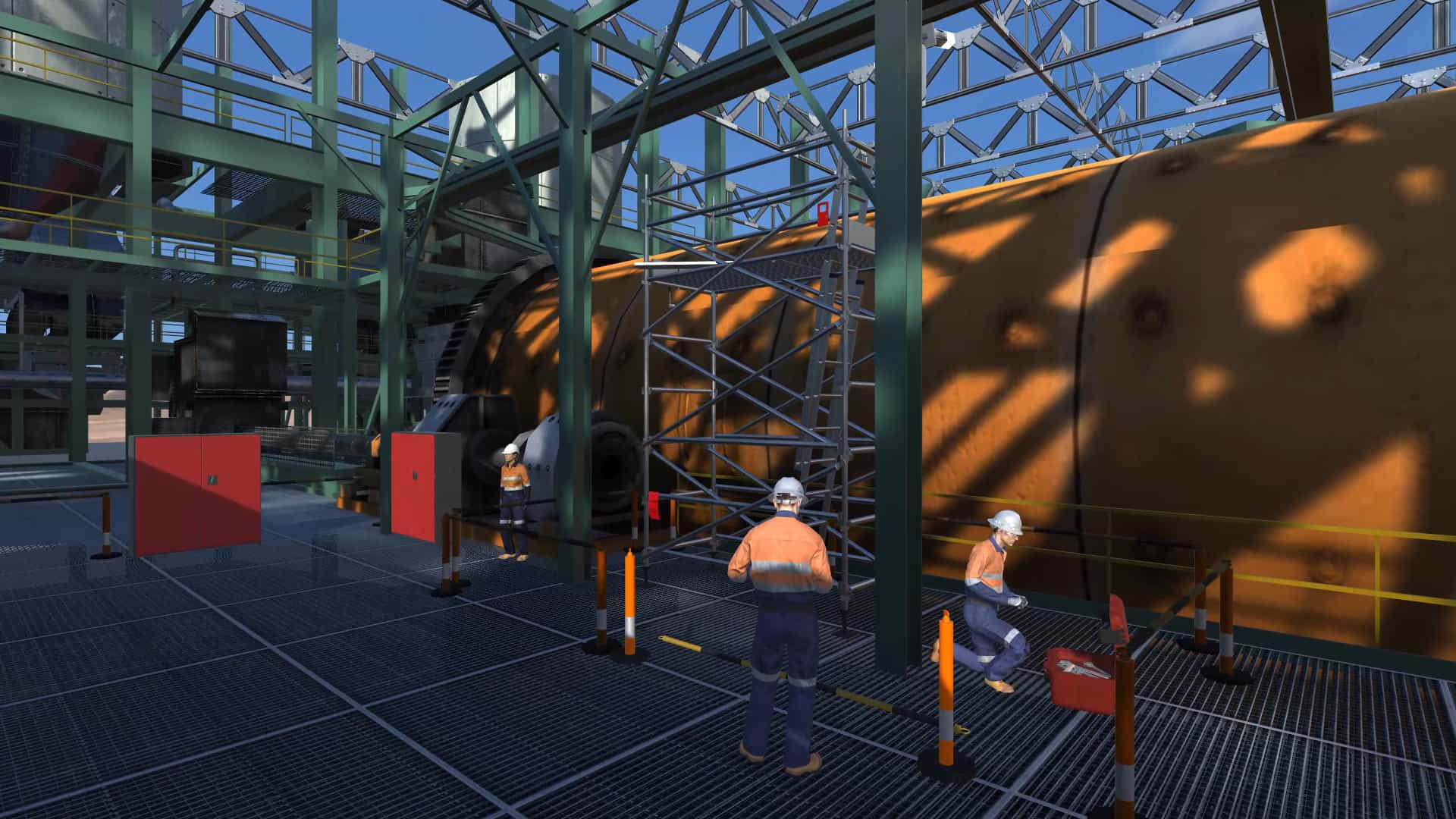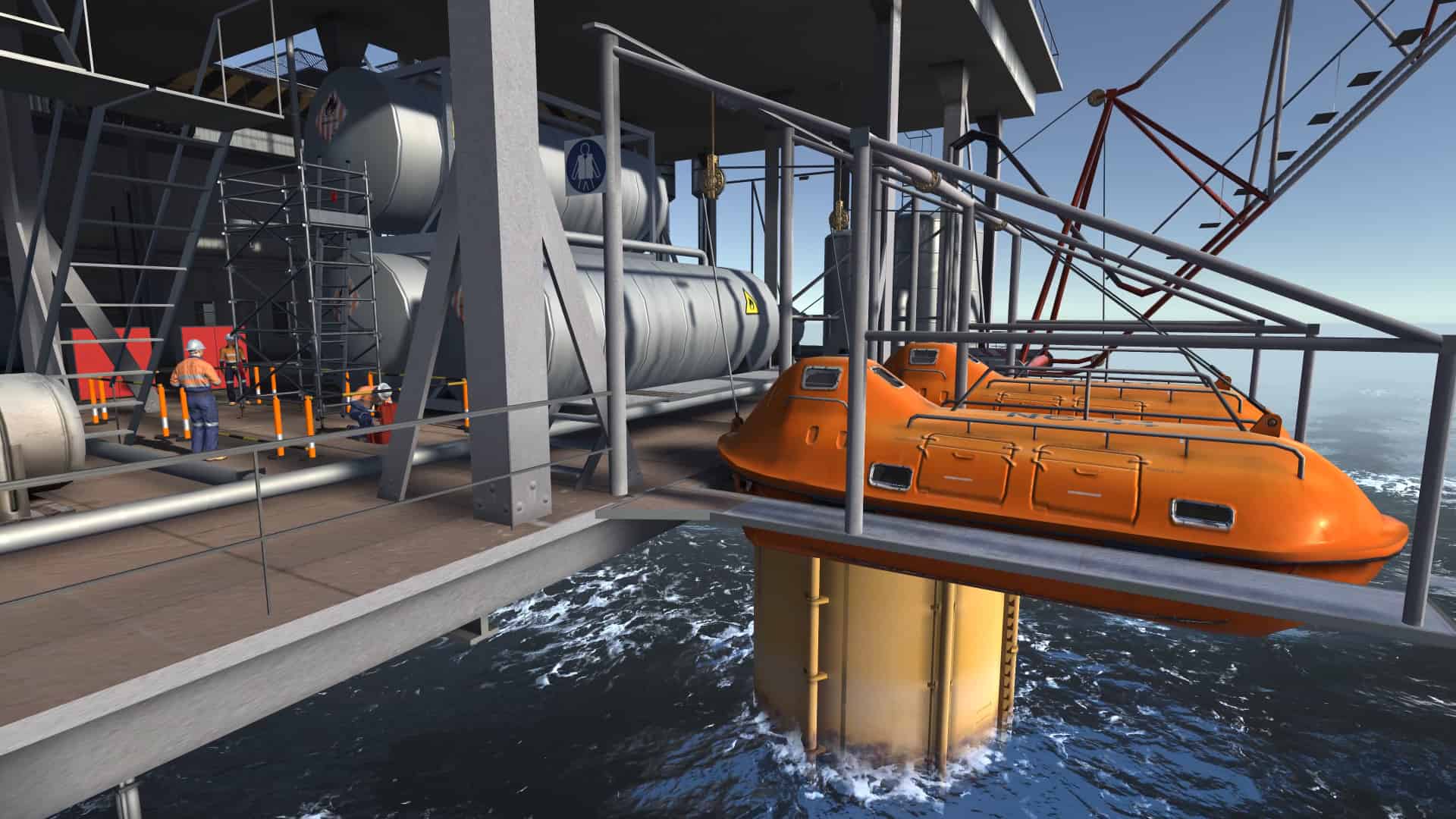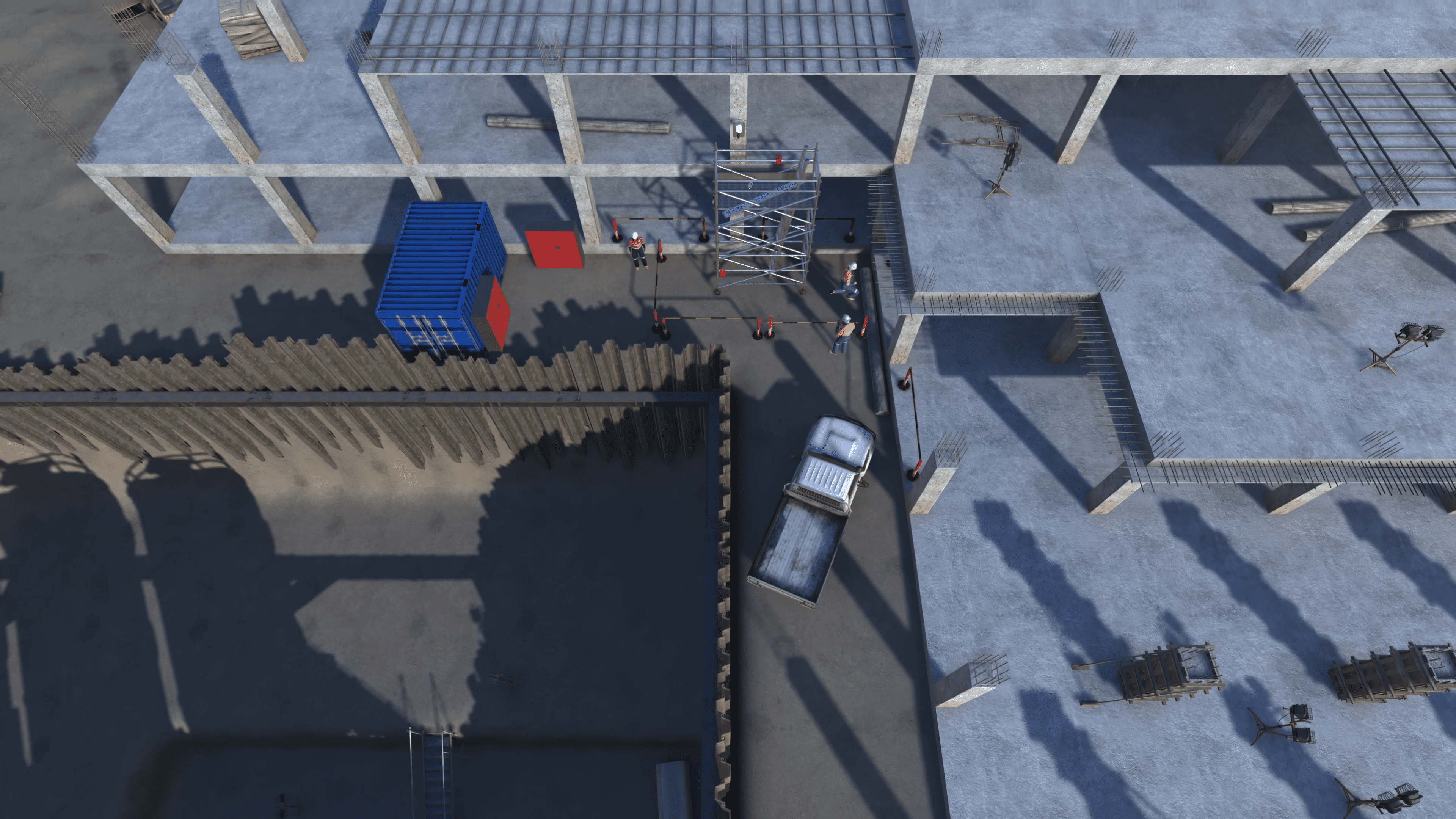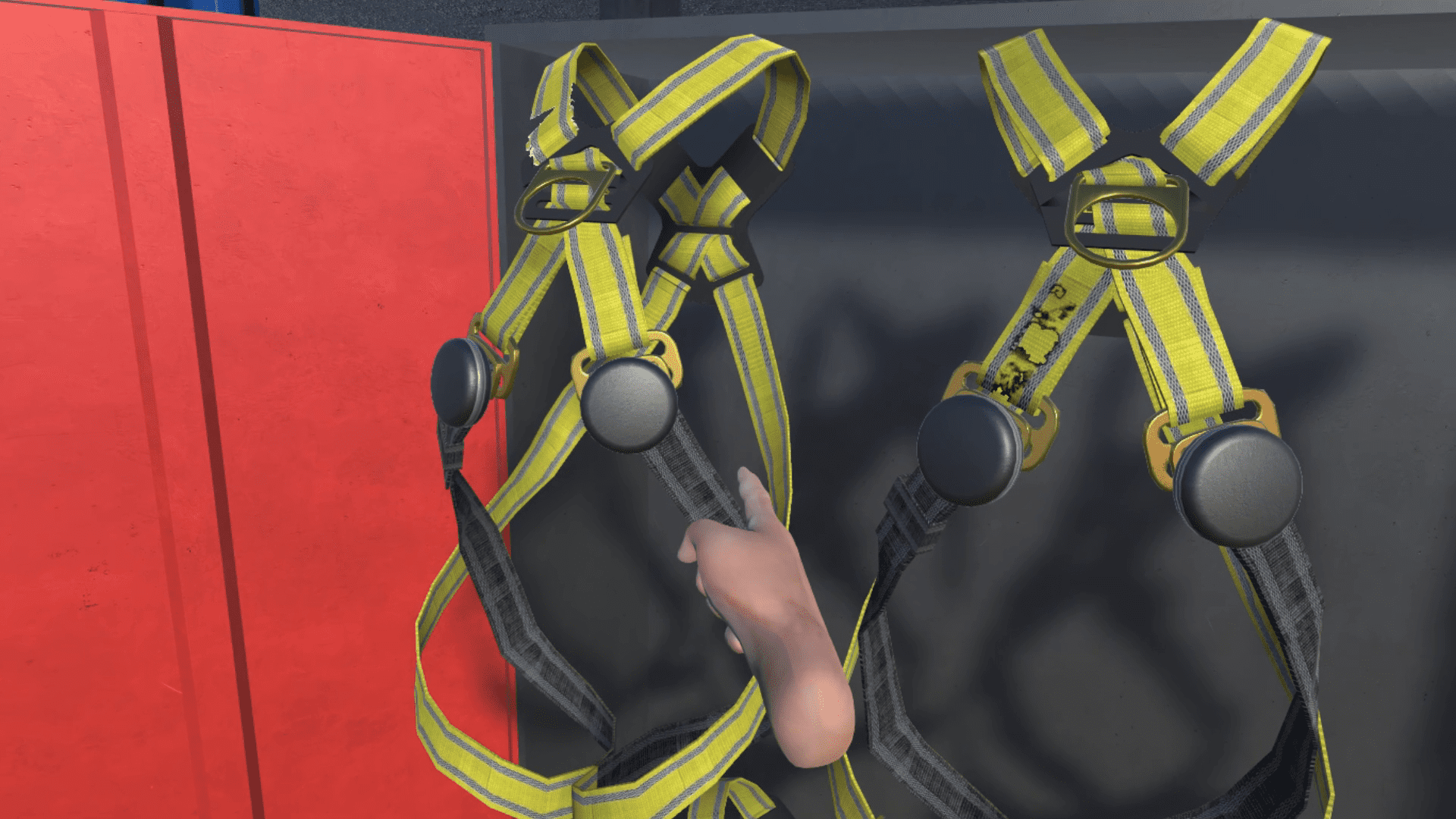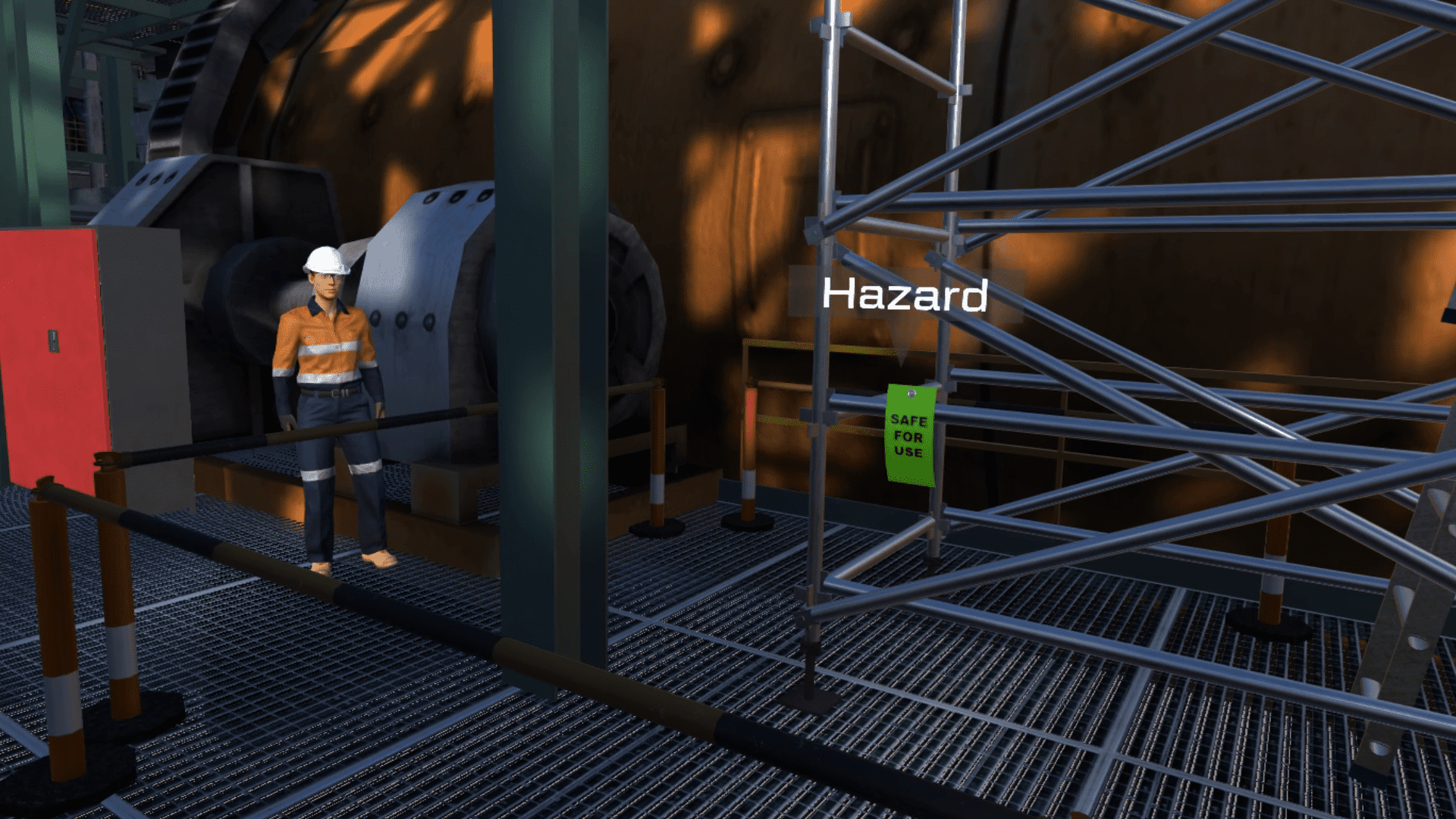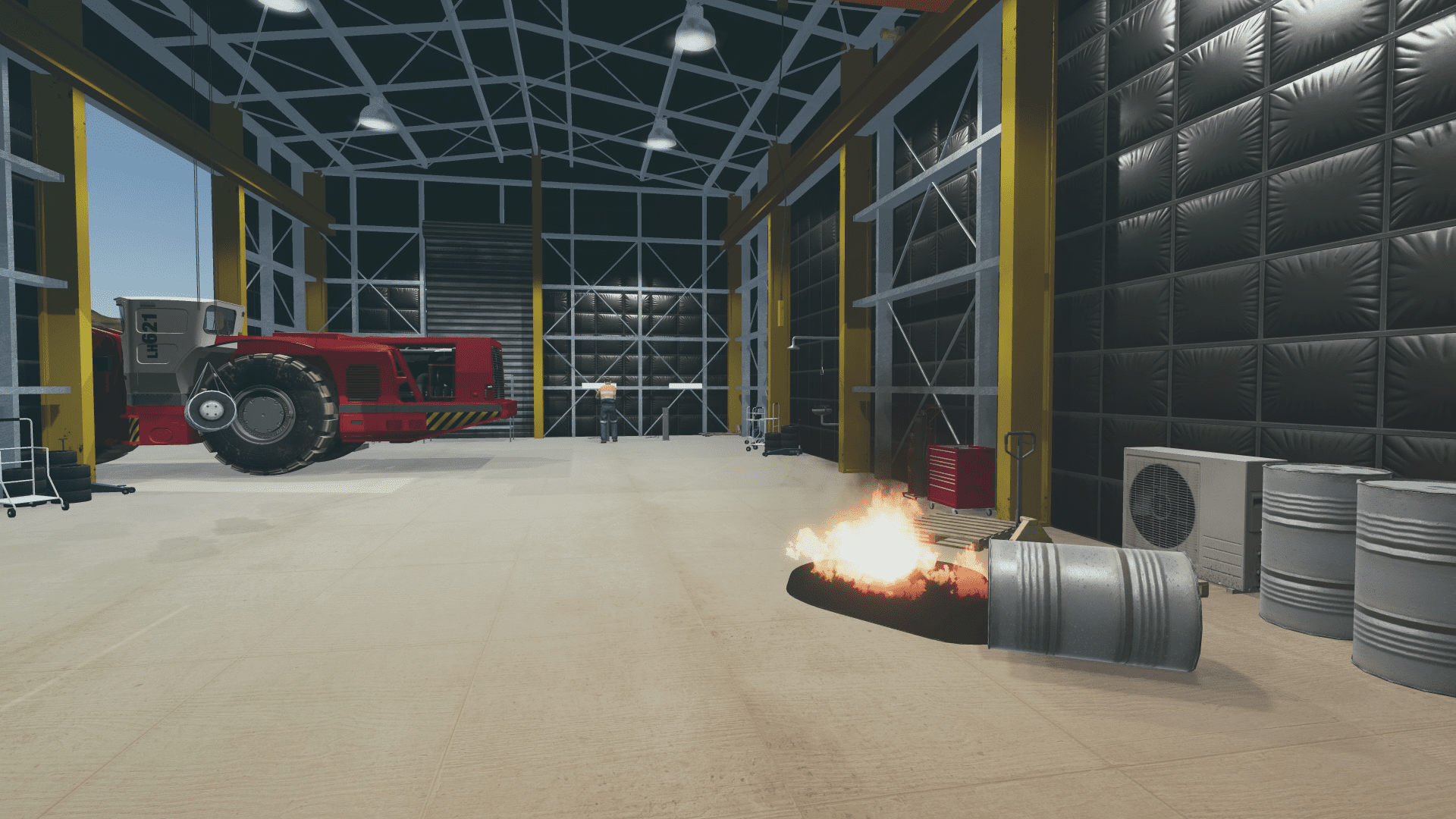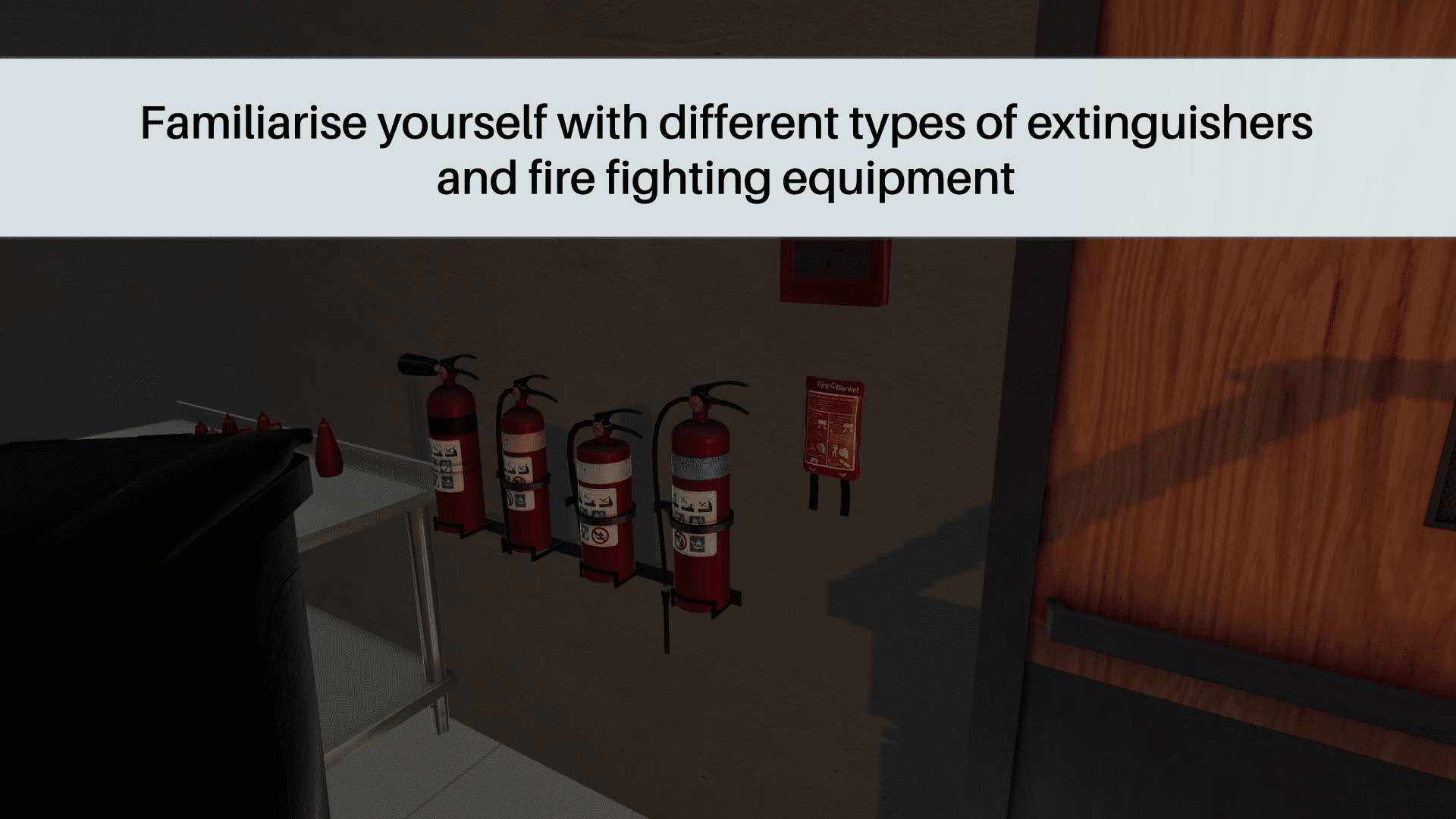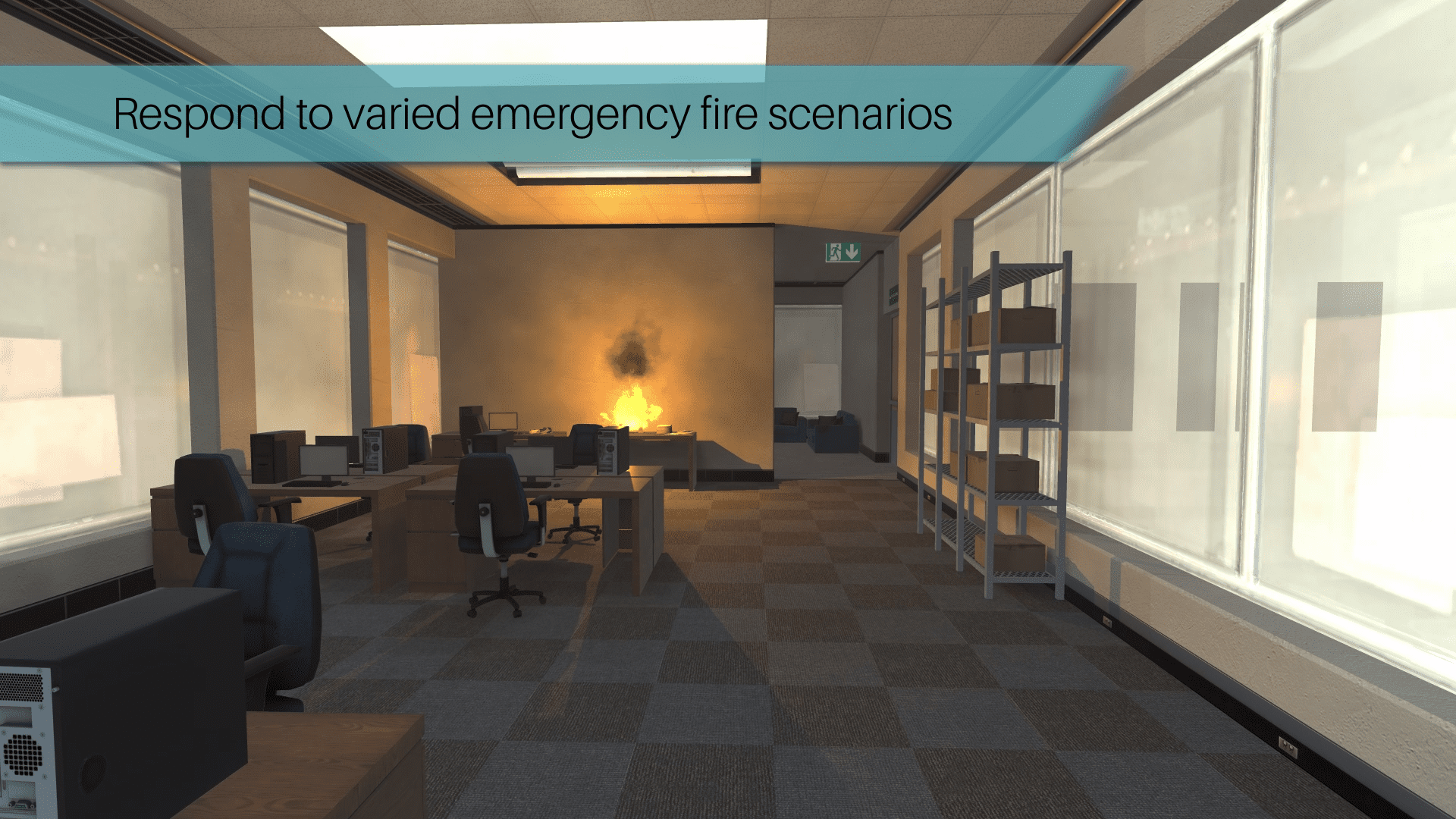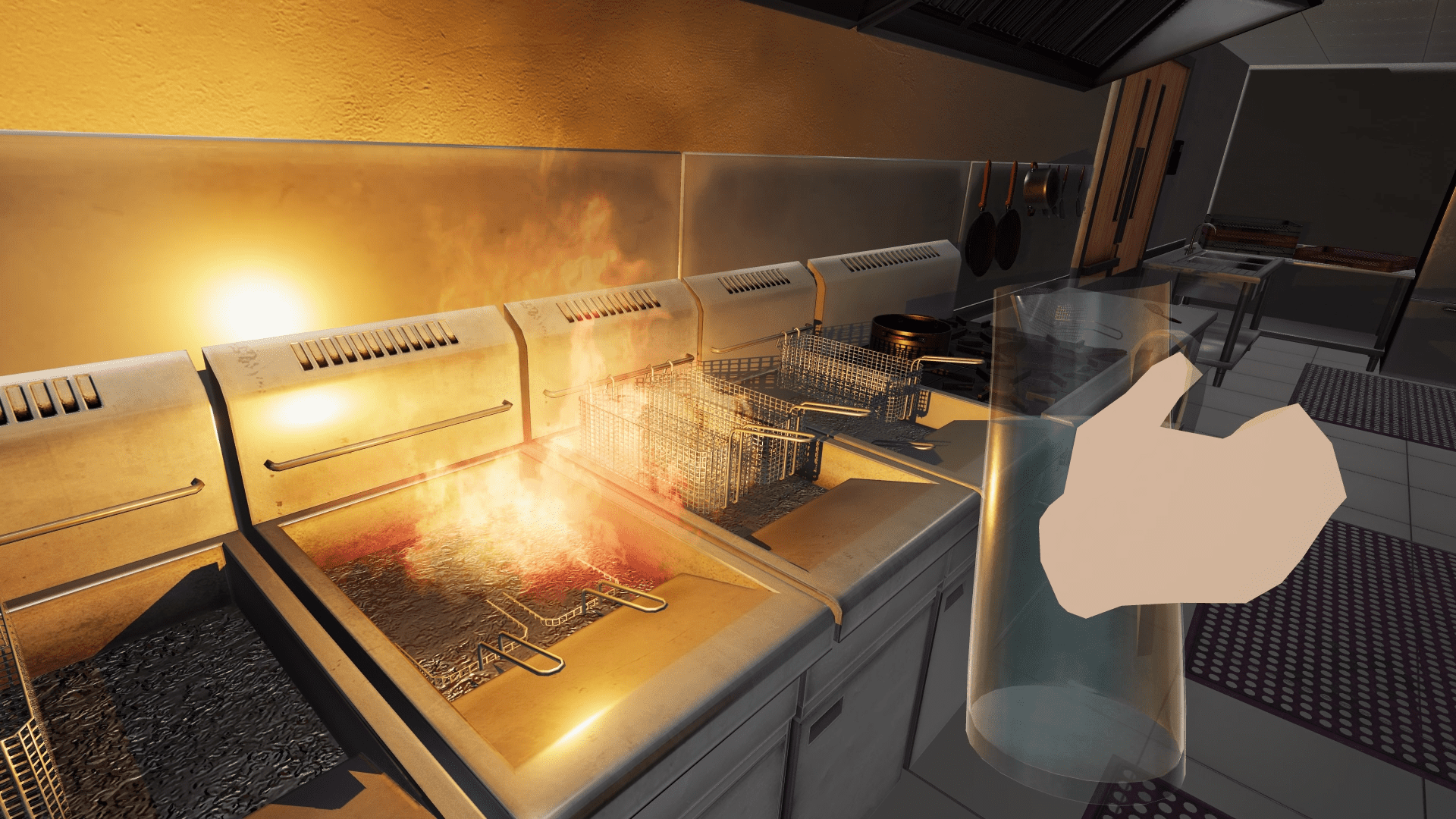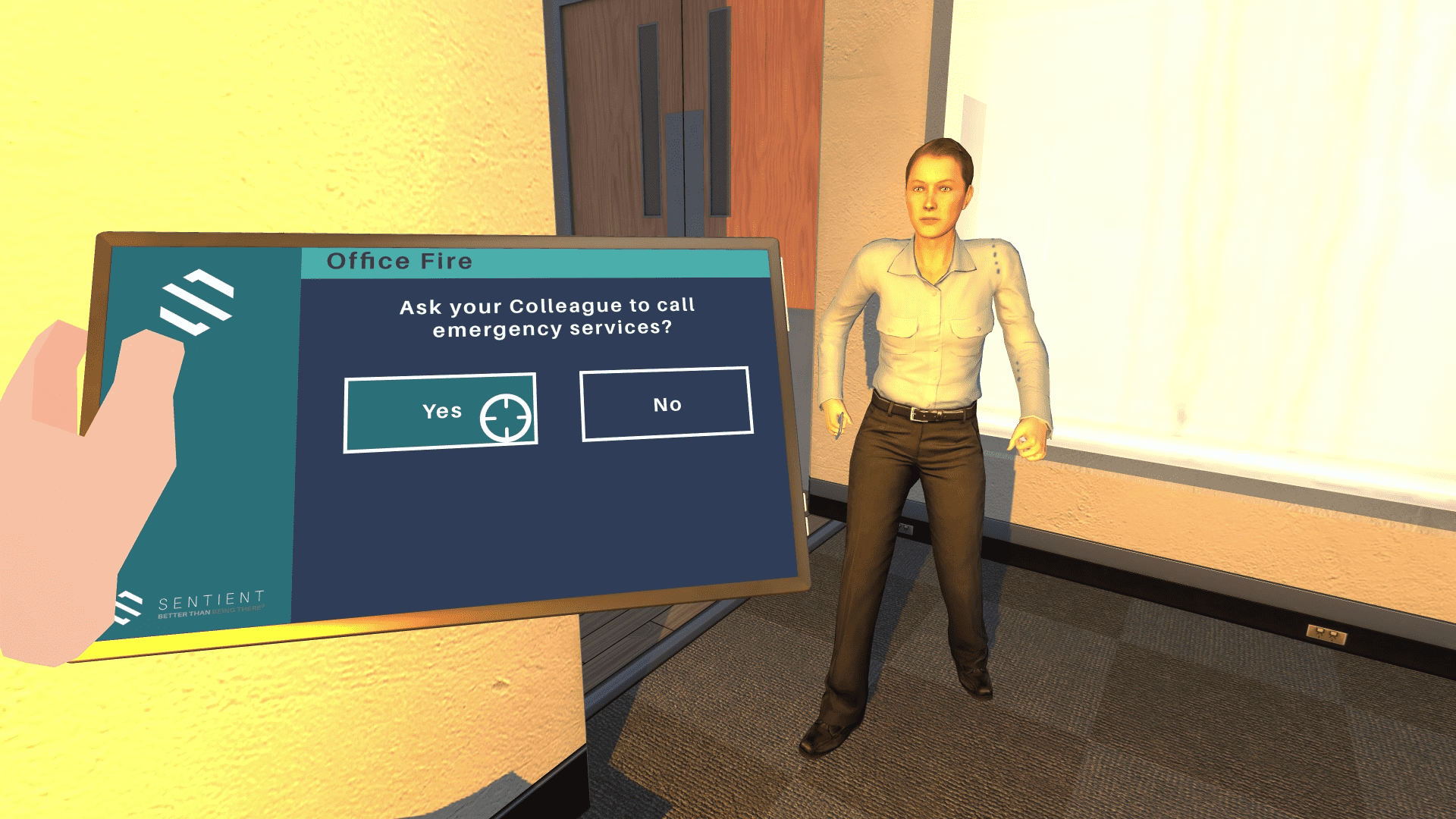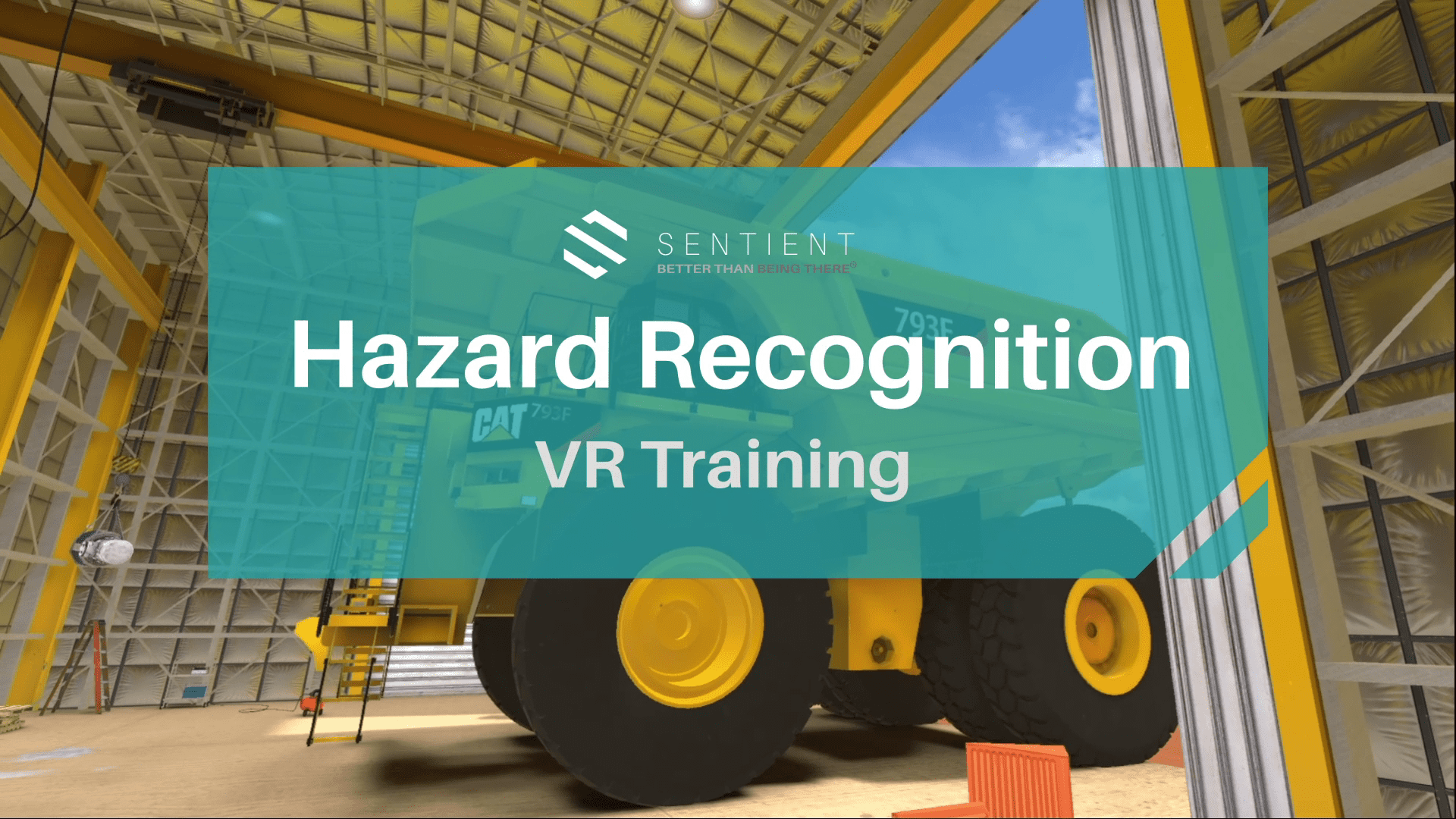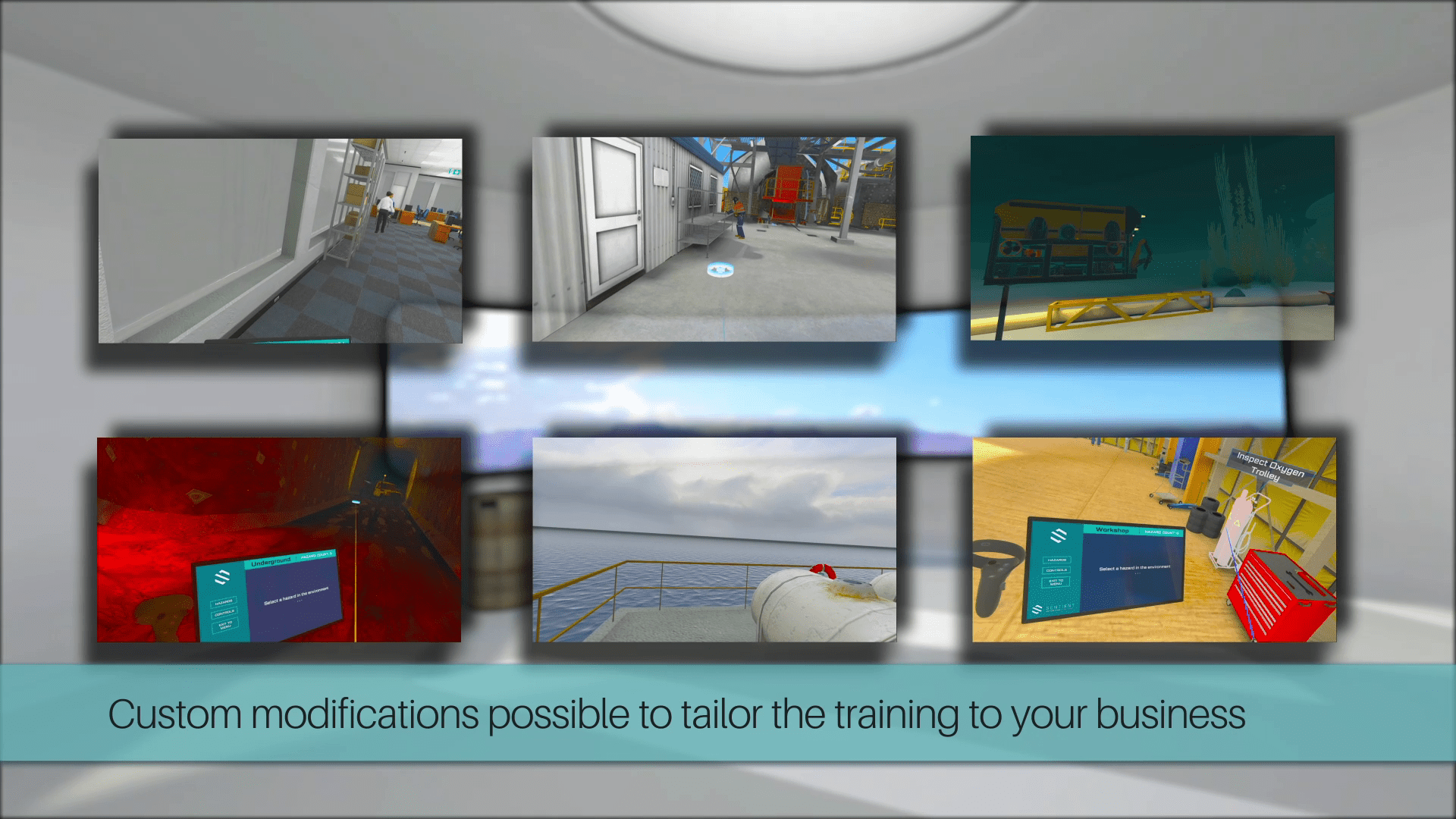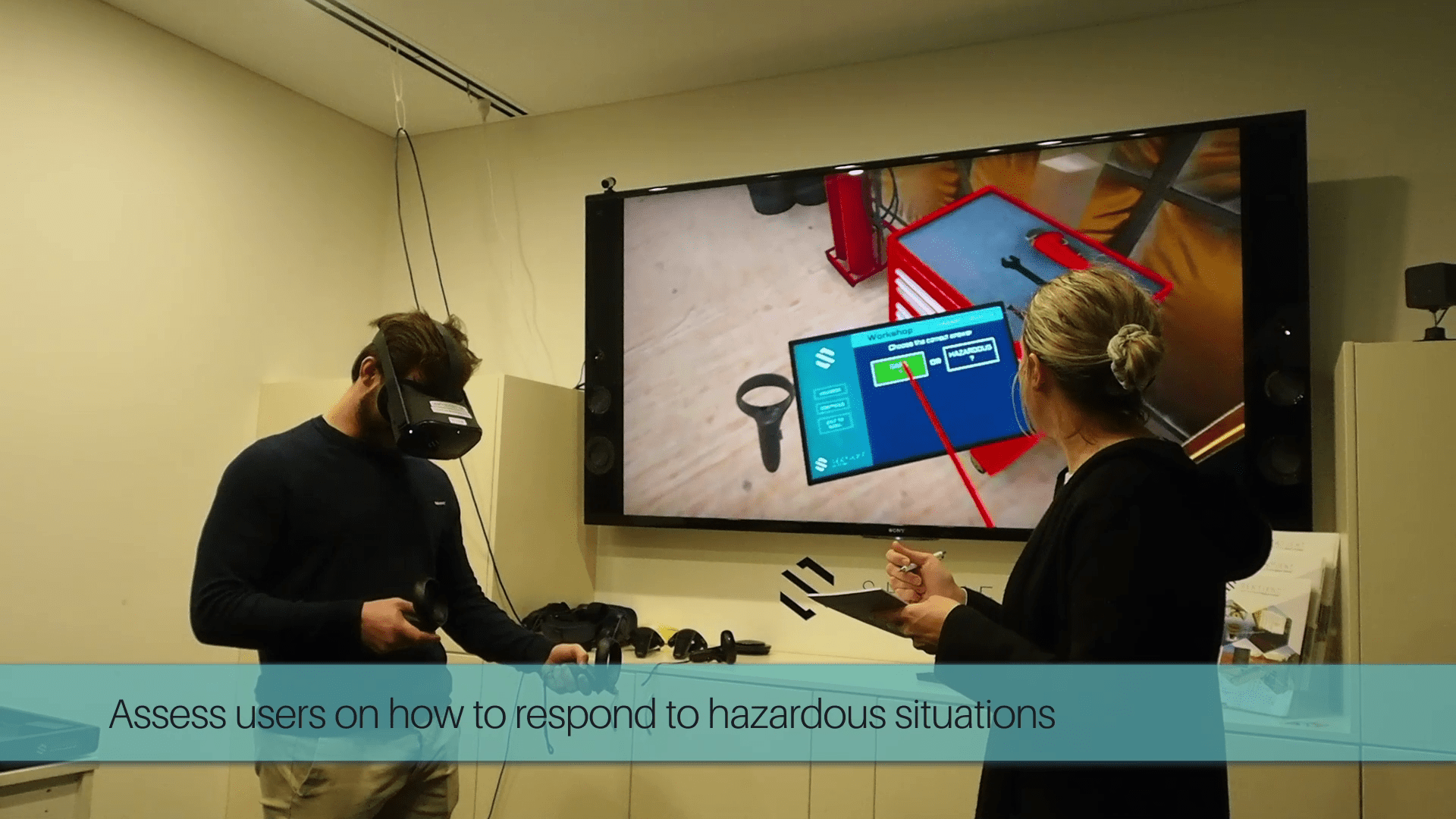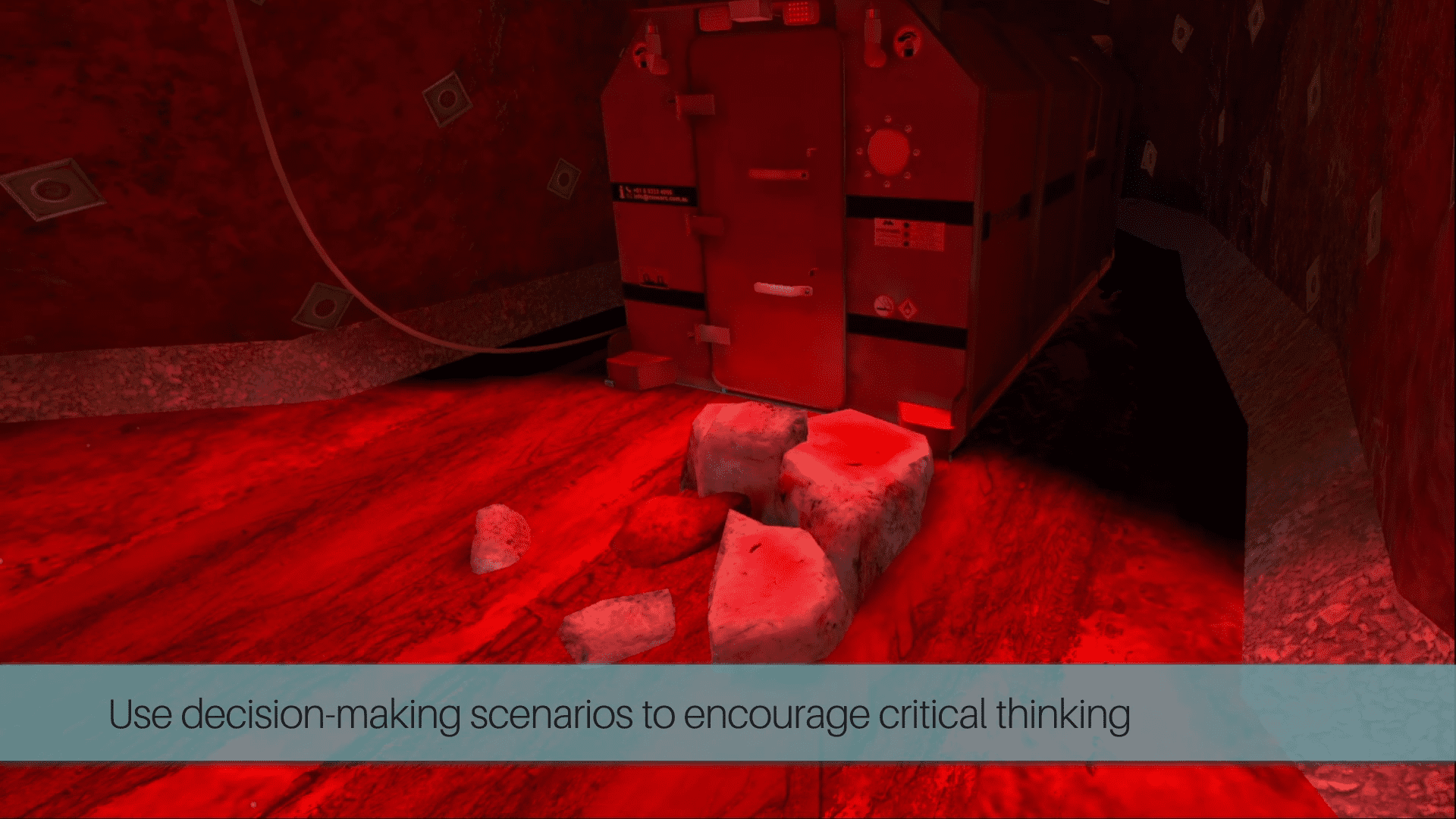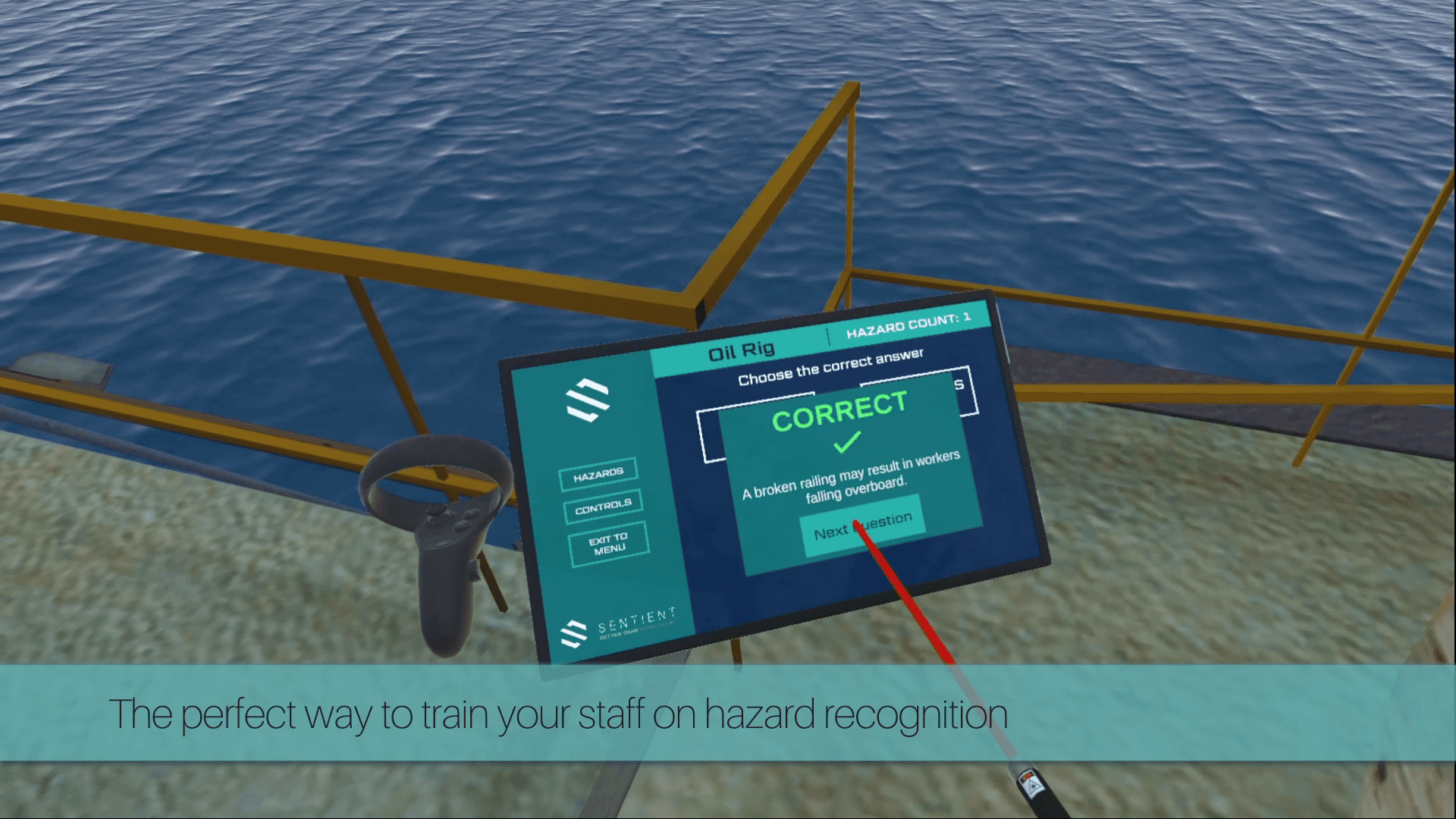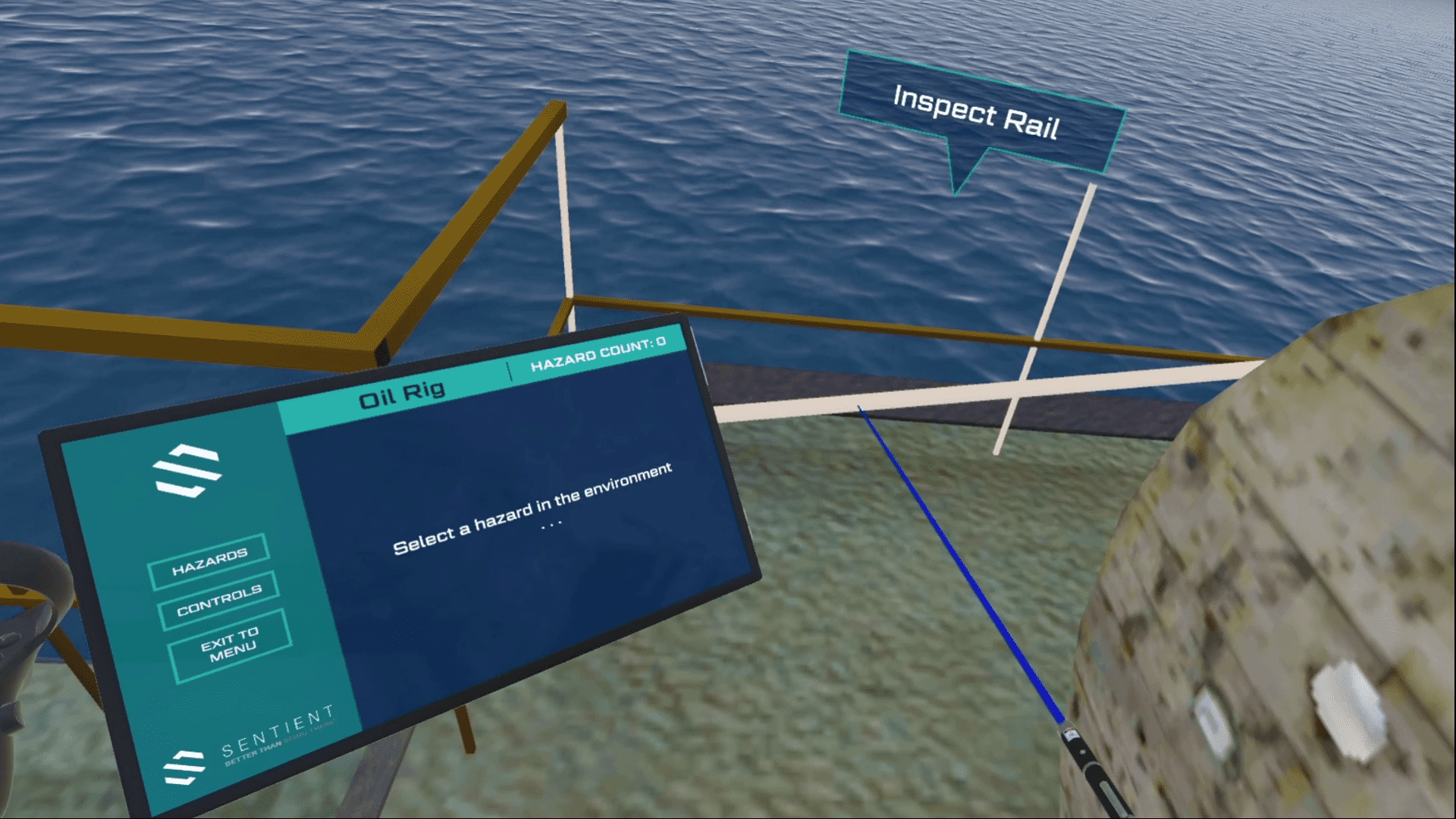Working at Heights - VR Training
Our off-the-shelf, fully interactive Working at Heights Virtual Reality Training is readily available for industries across Australia. Our Working at Heights VR Training utilises the latest in virtual reality tech to offer a tailored virtual reality and training experience.
Customisation available
Fire Extinguisher Safety - VR Training
Sentient offers off-the-shelf, fully interactive Fire Extinguisher Safety Training for clients in Perth and across Australia. Our VR development team can provide customised solutions to meet your specific safety training requirements.
Customisation available
Hazard Recognition- VR Training
Enhance safety awareness with our off-the-shelf, fully interactive Hazard Awareness and Recognition Training, powered by our advanced virtual reality tech. Discover our customisable VR Training services to integrate workplace hazard training into your virtual reality training modules.
Customisation available
What types of training can be done in VR?
VR training is effective for a wide range of applications, including
- Safety training: Teaching emergency response procedures and workplace safety protocol.
- Technical skills training: Instruction for equipment operation.
- Soft skills development: Enhancing communication and conflict resolution skills.
- Education: VR for education offers users an engaging and interactive learning environment.
FREQUENTLY ASKED QUESTIONS
What is VR training?
How does our VR Training differ from others?
How much does a VR Training tool cost?
What if I get sick in VR?
Additionally, we offer non-VR versions of all our VR modules, so learners can still access the training without missing out!
What hardware and software do I need for VR training?
VR training can be experienced using standalone headsets, like the Meta Quest or HTC VIVE, without the need for additional software.
PC-VR Training
For enhanced visual quality or training that involves larger areas, VR modules can be streamed from a gaming PC to standalone headsets. In this case, software specific to the headset is required to run the modules.
Reach out to our team to discuss which one is right for you!


